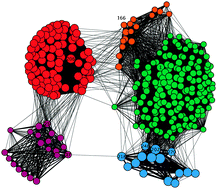Synergistic folding of two intrinsically disordered proteins: searching for conformational selection†‡
Abstract
Intrinsically disordered

- This article is part of the themed collection: Intrinsically Disordered Proteins
* Corresponding authors
a
Department of Biochemistry, Kansas State University, Manhattan, USA
E-mail:
jianhanc@ksu.edu
Fax: +1 785 532-7278
Tel: +1 785 532-2518
Intrinsically disordered

 Please wait while we load your content...
Something went wrong. Try again?
Please wait while we load your content...
Something went wrong. Try again?
D. Ganguly, W. Zhang and J. Chen, Mol. BioSyst., 2012, 8, 198 DOI: 10.1039/C1MB05156C
To request permission to reproduce material from this article, please go to the Copyright Clearance Center request page.
If you are an author contributing to an RSC publication, you do not need to request permission provided correct acknowledgement is given.
If you are the author of this article, you do not need to request permission to reproduce figures and diagrams provided correct acknowledgement is given. If you want to reproduce the whole article in a third-party publication (excluding your thesis/dissertation for which permission is not required) please go to the Copyright Clearance Center request page.
Read more about how to correctly acknowledge RSC content.
 Fetching data from CrossRef.
Fetching data from CrossRef.
This may take some time to load.
Loading related content
